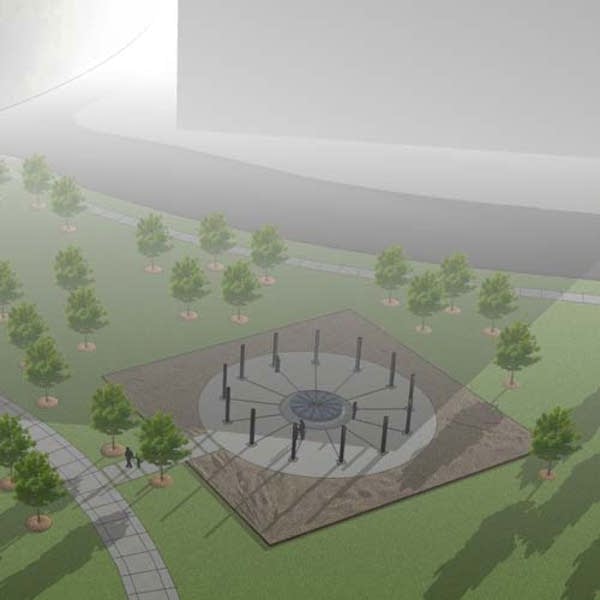Despite final NTSB report, some still have questions

NTSB investigators will point to the under-designed gusset plates as a primary cause of the bridge collapse. In other words, the gussets, which held the bridge beams together, were too thin to bear the weight. In fact, the weight of the bridge also contributed to the disaster. MnDOT added two inches of concrete to the bridge deck over its lifetime. That amounted to about 20 percent more weight for the bridge to carry.
On the day of the collapse, 270 tons of construction equipment and material sat piled just above the bridge's weakest spot. MPR news has learned that the weight of the pavement and the equipment triggered a, "cascading effect" that led to the failure of the span. In effect, the structure was pushed beyond its capacity.
MPR News has also learned that NTSB investigators determined that bridge engineers and inspectors did not have a system in place to double check that all factors and safety features of the bridge were sound. NTSB investigators also ruled out one maintenance issue as a factor. The investigators determined that corrosion on the bridge's steel did not play a significant role in the collapse.
Thursday's NTSB hearing will be watched by a lot of people. Among them is Kimberly Brown, she was on the bridge when it collapsed. During an interview recently, she viewed the new bridge from Gold Medal Park in Minneapolis.
Create a More Connected Minnesota
MPR News is your trusted resource for the news you need. With your support, MPR News brings accessible, courageous journalism and authentic conversation to everyone - free of paywalls and barriers. Your gift makes a difference.

"You know, I just crossed it for the first time, last weekend I think," Brown said.
She won't be at the hearing on the bridge collapse, but she will be listening for the answer to one question.
"Is the truth going to come out? Is what they say really the truth?" Brown wonders.
"That is the objective here," said NTSB Acting Chair Mark Rosenker. "To seek the truth. What happened? Why did it happen? How can we prevent it from happening again?"
Rosenker said the investigators will present their findings in detail in part to allay any skepticism about the investigation. Usually a hearing lasts half a day, but the NTSB has scheduled this hearing for two days.

Investigators will present findings based on science, Rosenker said. And in science there is no room for politics. Rosenker said more than 100 people worked on this case during the past 15 months.
"We put every possible resource on this case," Rosenker said. "We asked for an expeditious resolution, an expeditious examination. No shortcuts."
Rosenker said investigators verified their results with independent, national labs. He said he is comfortable with the results.
"I am comfortable, I can't tell you if my four other colleagues are," Rosenker said.
The board will ask questions and determine whether investigators have given the appropriate weight to each possible cause, it may then vote to change those conclusions. The board will also make recommendations to the Federal Highway Administration and the American Association of State Highway Transportation Officials to improve safety and design.

The NTSB's study does not blame any party for a disaster, but many of the people watching today's hearings will be looking for evidence of responsibility.
Chris Messerly is part of a consortium of attorneys representing more than 120 victims, pro bono. His team has also hired a consulting firm to conduct its own investigation into the collapse.
"I will take the NTSB's conclusions or opinions with a grain of salt as I think everyone has to because it is just their opinions," Messerly said. "There are some heavier hitting experts waiting in the wings to be able to review all the information to reach the ultimate conclusion as to just why the bridge fell down."
At least four other studies of the bridge collapse are in the works. One lawyer just announced plans to file a liability lawsuit today in Minneapolis. The suit names a MnDOT bridge consulting firm and a construction contractor working on the bridge at the time of the collapse.
